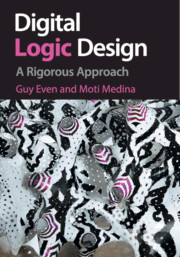22 - A Simplified DLX: Implementation
from PART IV - A SIMPLIFIED DLX
Published online by Cambridge University Press: 05 November 2012
Summary
In this chapter, we show how to implement the simplified DLX. The implementation consists of two parts: a finite state machine, called the control, and a circuit containing registers and functional modules, called the datapath. The separation of the design into a controller and a datapath greatly simplifies the task of designing the simplified DLX.
The datapath contains all the modules needed to execute instructions. These modules include registers, a shifter, and an arithmetic logic unit. The control is the brain that uses the datapath to execute the instructions.
DATAPATH
In this section, we outline an implementation of the datapath of a simplified DLX, as depicted in Figure 22.1. We outline the implementation by specifying the inputs, outputs, and functionality of every module in the datapath. The implementation of every module is done by using the memory modules and the combinational circuits that we have implemented throughout this book. Note that Figure 22.1 is not complete: (i) inputs and outputs of the control FSM are not presented and (ii) some of the input–output ports, and their corresponding wires, are not presented. In fact, only wires that are 32-bit wide are presented in Figure 22.1.
The Outside World: The Memory Controller
We begin with the outside world, that is, the (external) memory. Recall that both the executed program and the data are stored in the memory.
The memory controller is a circuit that is positioned between theDLX and the main memory.
- Type
- Chapter
- Information
- Digital Logic DesignA Rigorous Approach, pp. 323 - 342Publisher: Cambridge University PressPrint publication year: 2012



